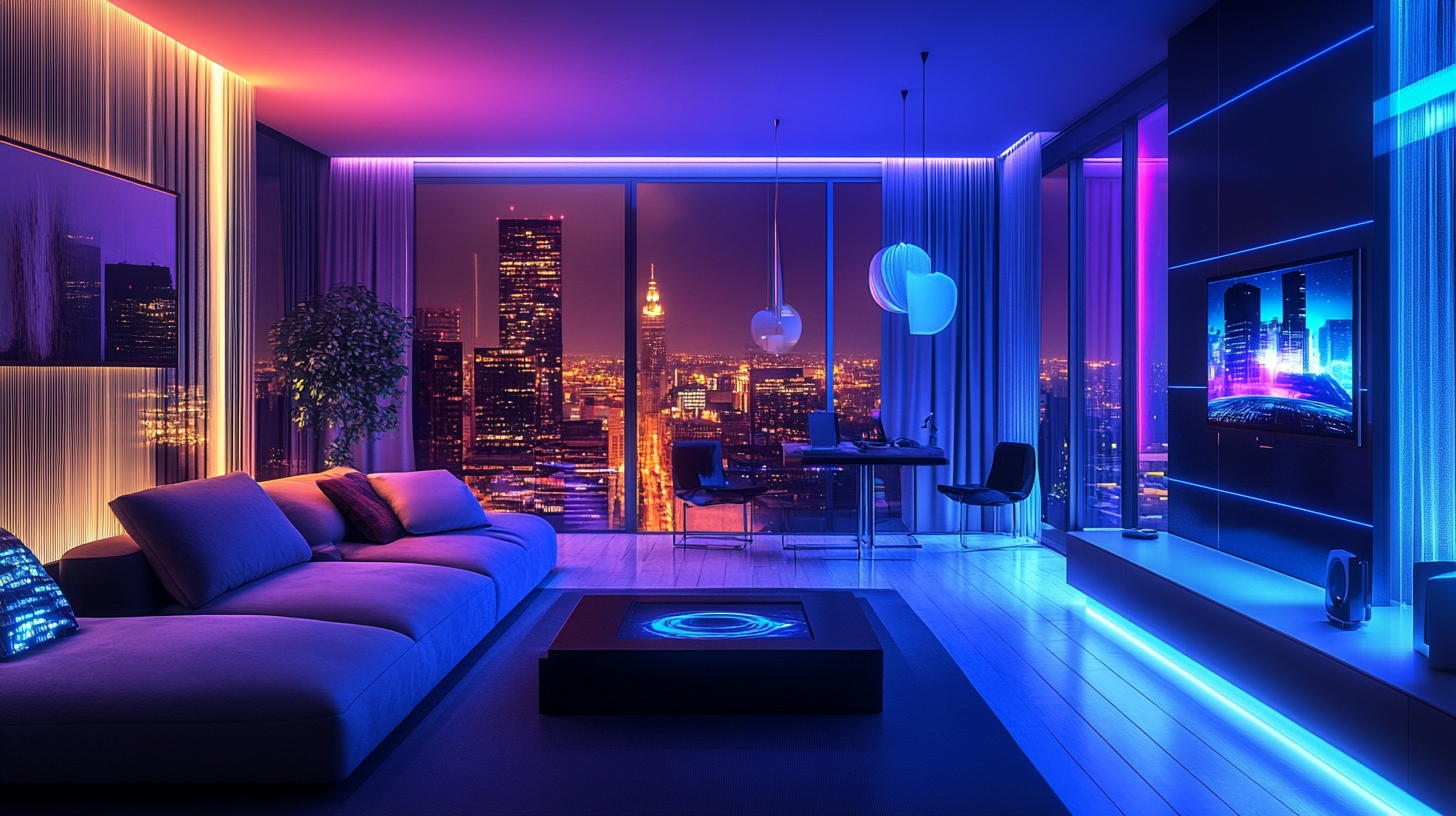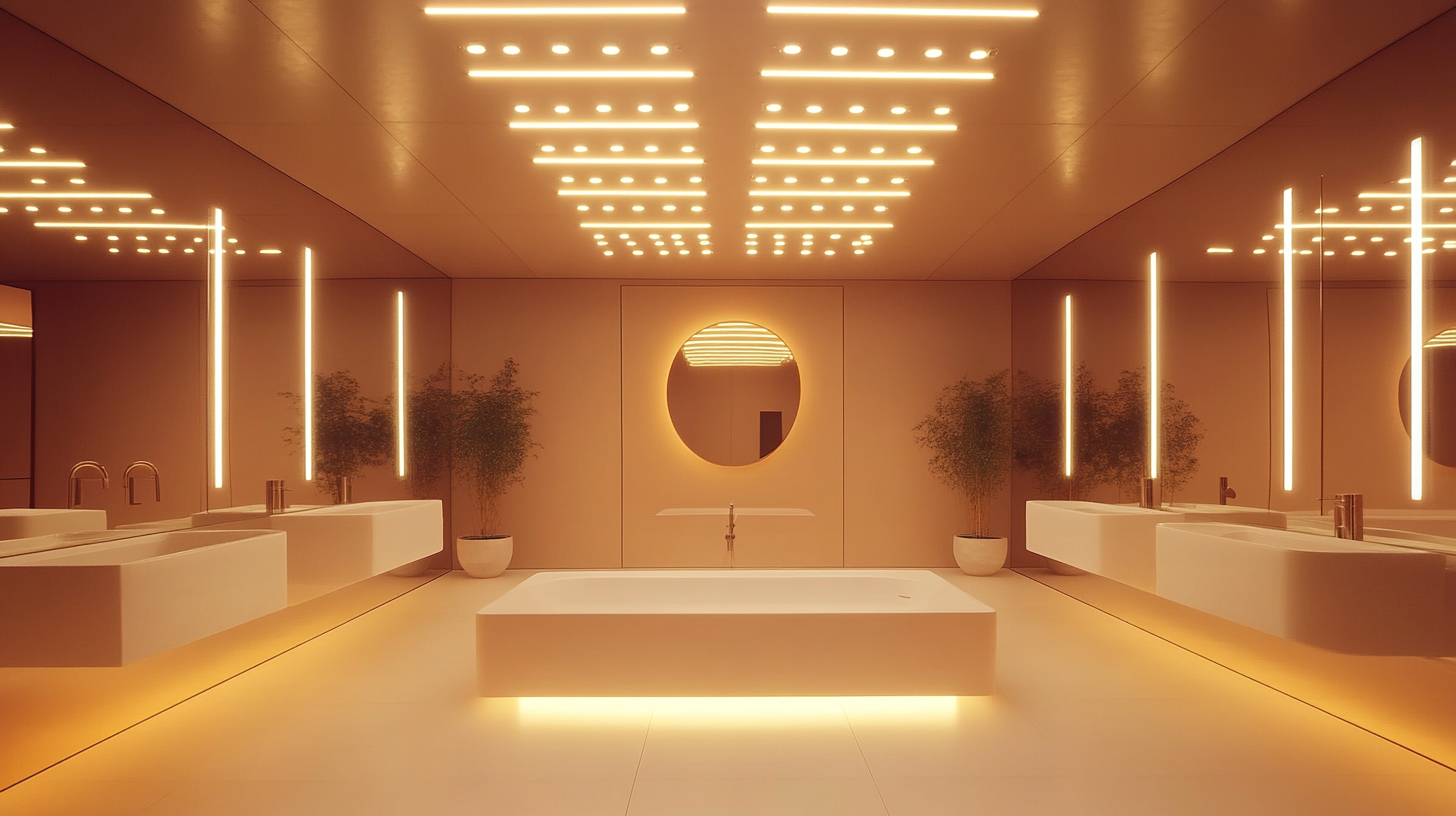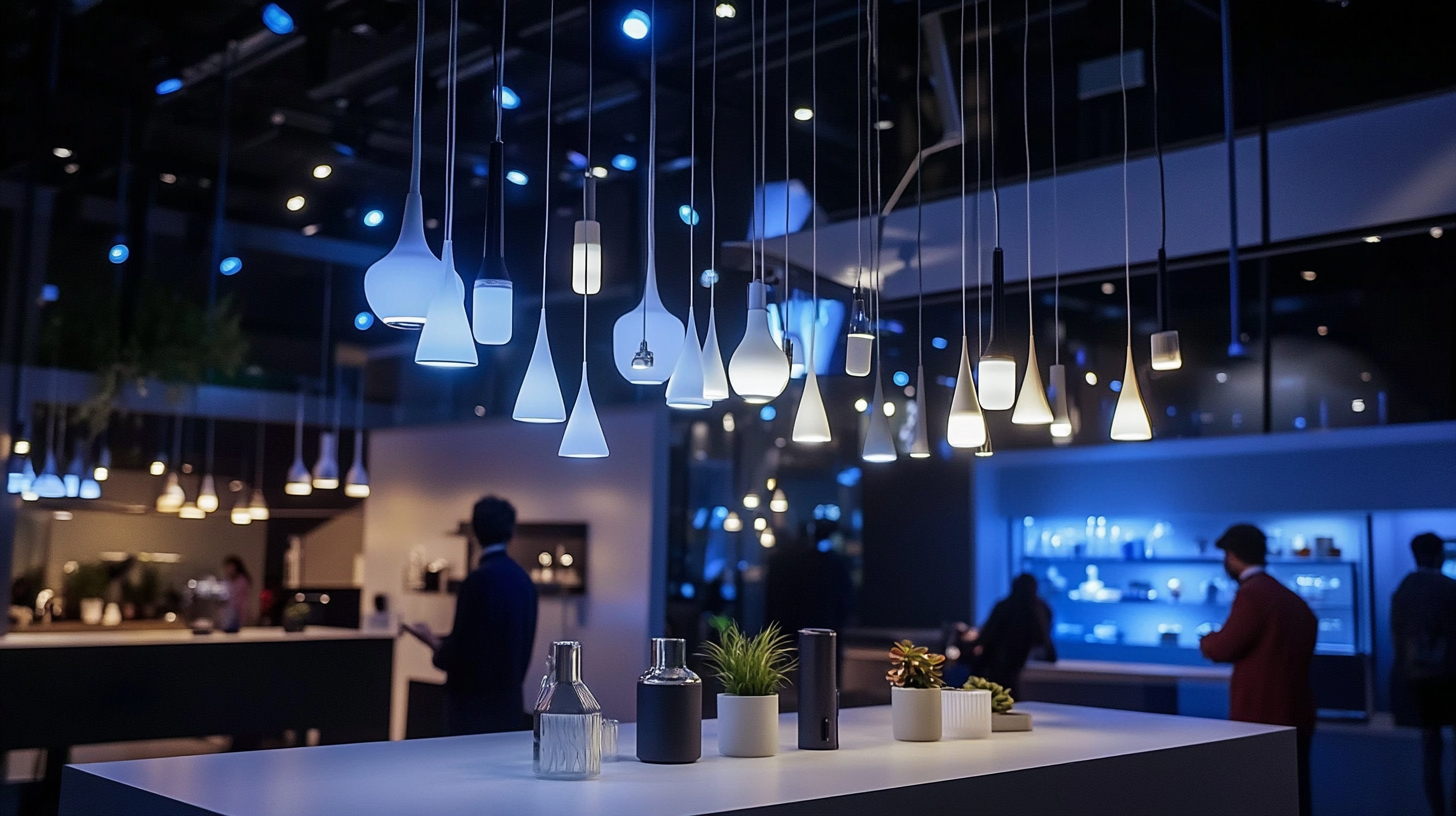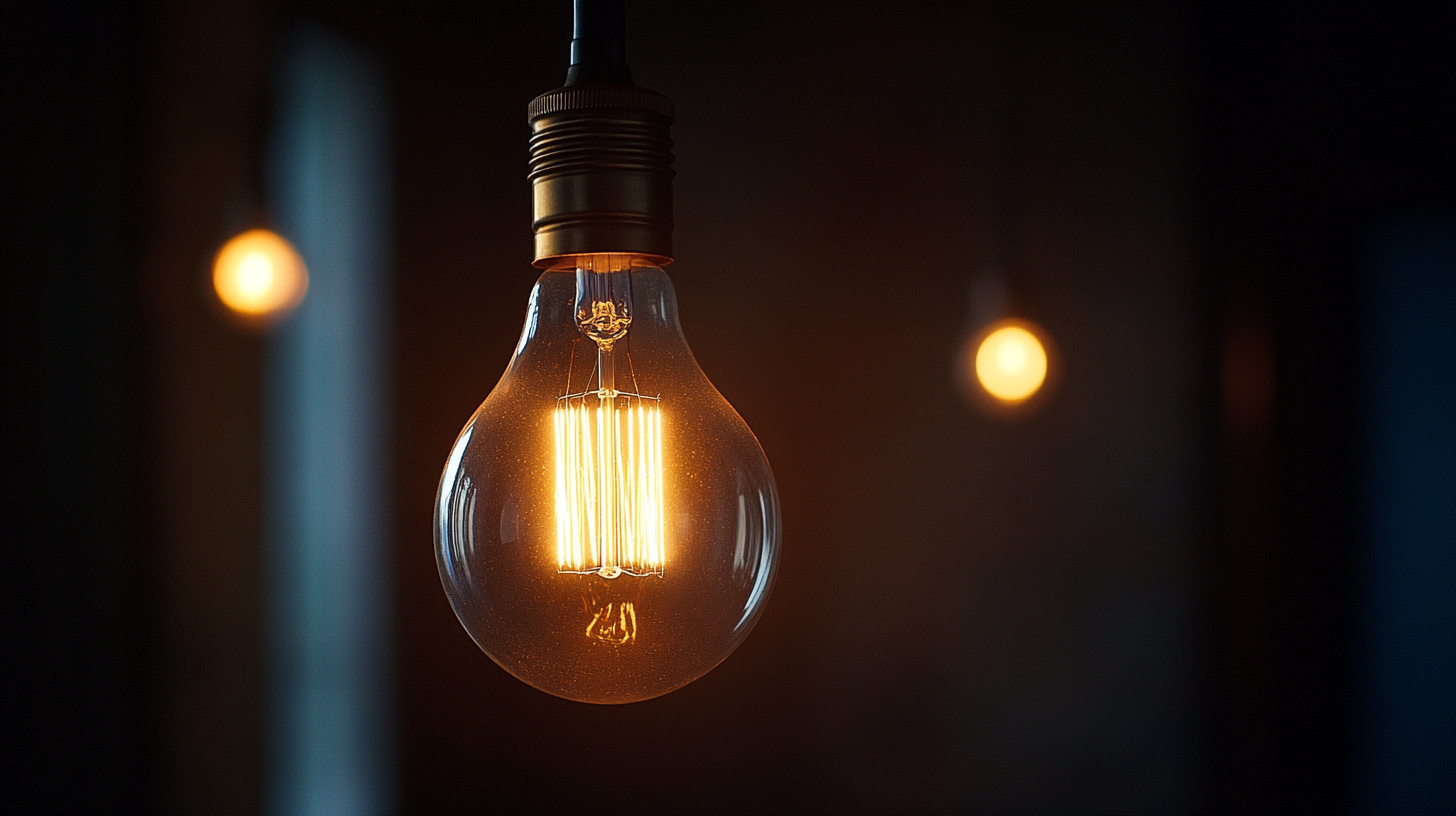Illuminating the Future: 2025 Trends in Smart LED Light Fixtures for Global Buyers
The lighting industry is undergoing a transformative shift, driven by advancements in technology and a growing demand for energy-efficient solutions. As we approach 2025, the market for Smart LED Light Fixtures is projected to witness significant growth, with estimates suggesting that the global smart lighting market will reach $70 billion by 2027, as reported by ResearchAndMarkets. This transition not only emphasizes sustainability but also enhances user experiences through improved functionality and connectivity. Smart LED Light Fixtures are becoming essential elements in both residential and commercial spaces, allowing users greater control over their lighting environments while reducing energy consumption.
Moreover, technological innovations such as IoT integration, voice control compatibility, and adaptive lighting capabilities are increasingly shaping consumer preferences. A recent market analysis from Statista indicates that around 30% of households plan to adopt smart lighting solutions by 2025, reflecting a growing trend towards home automation. For global buyers, understanding these trends and the benefits associated with Smart LED Light Fixtures is crucial to staying ahead in the competitive market. As we delve into the upcoming trends for 2025, it becomes evident that the future of lighting is not only bright but also smart.

Emerging Technologies Shaping Smart LED Light Fixtures in 2025
In 2025, the landscape of smart LED light fixtures is poised for a revolutionary shift, driven by emerging technologies that enhance functionality and interactivity. One significant trend is the integration of Internet of Things (IoT) capabilities, allowing these fixtures to communicate seamlessly with other smart home devices. As consumers become more accustomed to interconnected ecosystems, smart LEDs will not only provide illumination but also contribute to the overall home automation experience, enhancing energy efficiency and convenience. Artificial intelligence (AI) is another critical player in the future of smart lighting. By incorporating machine learning algorithms, these fixtures will be capable of adapting to user preferences and behaviors. For instance, smart LEDs can analyze usage patterns to optimize brightness levels and color temperatures at different times of the day, creating a personalized ambiance while reducing energy consumption. This adaptive technology not only enhances user comfort but also promotes sustainability—an increasingly important factor for global buyers. Moreover, advancements in sensor technology will enable smart LED fixtures to respond to environmental changes. Ambient light sensors, motion detectors, and even health monitoring features will refine how lighting is utilized in residential and commercial spaces. As these technologies become more sophisticated, they will empower smart lighting solutions to automatically adjust based on occupancy or the level of natural light, making spaces more dynamic and functional. As a result, smart LED light fixtures will evolve from mere lighting sources to integral components of a holistic smart living environment.

Sustainability Trends: Eco-Friendly Innovations in Smart Lighting
As we move towards 2025, the spotlight on sustainability within the smart lighting industry is becoming increasingly pronounced. The evolution of smart LED fixtures goes hand in hand with eco-friendly innovations that reduce energy consumption and promote a greener planet. Leading manufacturers are prioritizing not only energy efficiency but also the materials used in their lighting products. By utilizing recyclable and sustainable materials, these companies are setting a new standard for environmental responsibility in the lighting sector.
Furthermore, the integration of smart technology with eco-friendly features is transforming how we approach illumination. Smart LED lights equipped with sensors can adjust brightness based on ambient light conditions, ensuring that energy is used only when necessary. This intelligent operation not only cuts down on electricity costs but also minimizes the carbon footprint associated with excessive energy consumption. Alongside this, advancements in solar-powered LED technology are making it possible to harness renewable energy for both residential and commercial lighting needs.
Additionally, the focus on health and well-being is driving innovations in smart lighting design. Features like circadian-friendly lighting mimic natural daylight patterns, promoting better sleep hygiene and overall wellness for users. This trend emphasizes the importance of not only sustainability but also the holistic benefits that smart lighting can provide. As global buyers seek out these innovative solutions, the future of smart lighting shines brightly, underpinned by a commitment to eco-friendliness and enhanced quality of life.

User-Centric Designs: Enhancing Everyday Spaces with Smart LED Solutions
As we navigate the ever-evolving landscape of smart LED light fixtures, the emphasis on user-centric design is more crucial than ever. The 2025 trends reflect a significant shift towards tailoring lighting solutions that not only illuminate spaces but also enhance user experience. This transformation goes beyond aesthetics; it speaks to the heart of functionality and emotional connection in everyday environments.
Integrating technology into smart LED fixtures enables a more customized interaction between users and their spaces. By leveraging data and user feedback, manufacturers can create lighting systems that adapt to individual preferences and lifestyle needs. This approach resonates with the principles outlined in recent research on customer-centric support services, showcasing the importance of empathy in the design process. The focus on human-centered design ensures that every feature serves a purpose, enhancing comfort and usability for the end-user.
Moreover, as we delve into the implications of Industry 4.0, the opportunity to further explore and innovate user interfaces in smart lighting is evident. The balance between high-tech functionality and genuine user connection must be a priority. Avoiding pitfalls like "engineered insincerity" in design, brands can foster an authentic relationship with consumers, ensuring that each lighting solution feels personal and thoughtfully integrated into their daily lives. Consequently, the future of smart LED solutions promises to not only brighten spaces but also enrich the human experience within those spaces.

Integration with Smart Home Ecosystems: The Future of Home Automation
As the trend towards smart home integration continues to gain momentum, smart LED light fixtures are becoming essential components of modern home automation systems. These innovative lighting solutions not only enhance the aesthetics of living spaces but also offer unprecedented convenience and functionality. With features like remote control, dimming capabilities, and adjustable color temperature, homeowners can customize their lighting to suit their mood or activities effortlessly.
One of the most exciting developments in smart LED light fixtures is their seamless integration with various smart home ecosystems. Whether it’s Google Home, Amazon Alexa, or Apple HomeKit, these fixtures can be easily synchronized with other smart devices, such as thermostats, security systems, and even smart appliances. This compatibility allows users to create personalized routines—imagine lights automatically dimming when it's time for a movie or brightening as you wake in the morning, all controlled with a simple voice command or app setting.
Moreover, smart LED fixtures often come equipped with sensors that can adapt to environmental changes. For instance, they can adjust brightness levels based on the time of day or occupancy in a room, promoting energy efficiency. This feature not only reduces electricity bills but also contributes to a sustainable lifestyle, aligning with the increasing demand for eco-friendly home solutions. As we look towards 2025, the rise of smart LED light fixtures will undoubtedly play a pivotal role in shaping the future of home automation, making living spaces more intelligent, responsive, and ultimately, more enjoyable.
Market Insights: What Global Buyers Need to Know About Smart Lighting Trends
As we move towards 2025, the smart lighting market is poised for transformative advancements. Global buyers should be aware that the smart LED light fixture market is not just about energy efficiency; it encompasses a broader trend towards integrated smart home systems. With the smart home market projected to reach a staggering $147.5 billion in 2025, savvy consumers are increasingly seeking products that not only illuminate spaces but also enhance connectivity and functionality within their homes.
The rise of smart LED lighting is influenced by consumer demand for innovative fixtures that offer customizable lighting experiences. Advanced features such as app-controlled settings, voice activation, and automated schedules are becoming integral to the typical smart home ecosystem. Furthermore, as aesthetic preferences evolve, manufacturers are likely to focus on designs that blend seamlessly with modern décor, appealing to a wide range of consumer tastes while promoting ambient versatility.
The expansion of the smart lighting market aligns with broader trends observed in related sectors, such as home decor and outdoor lighting. As consumers turn to solutions that contribute to both style and efficiency, the intersection of design and technology in smart LED lighting will play a crucial role. With these trends in mind, global buyers need to stay informed about the emerging products and innovations that will redefine residential lighting in the coming years.

